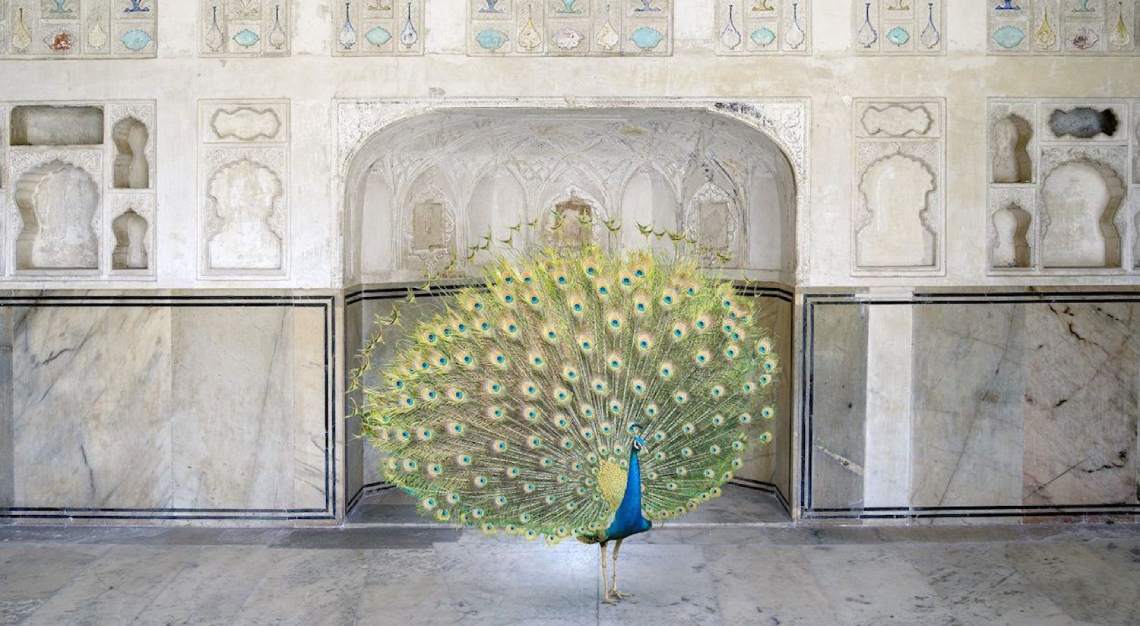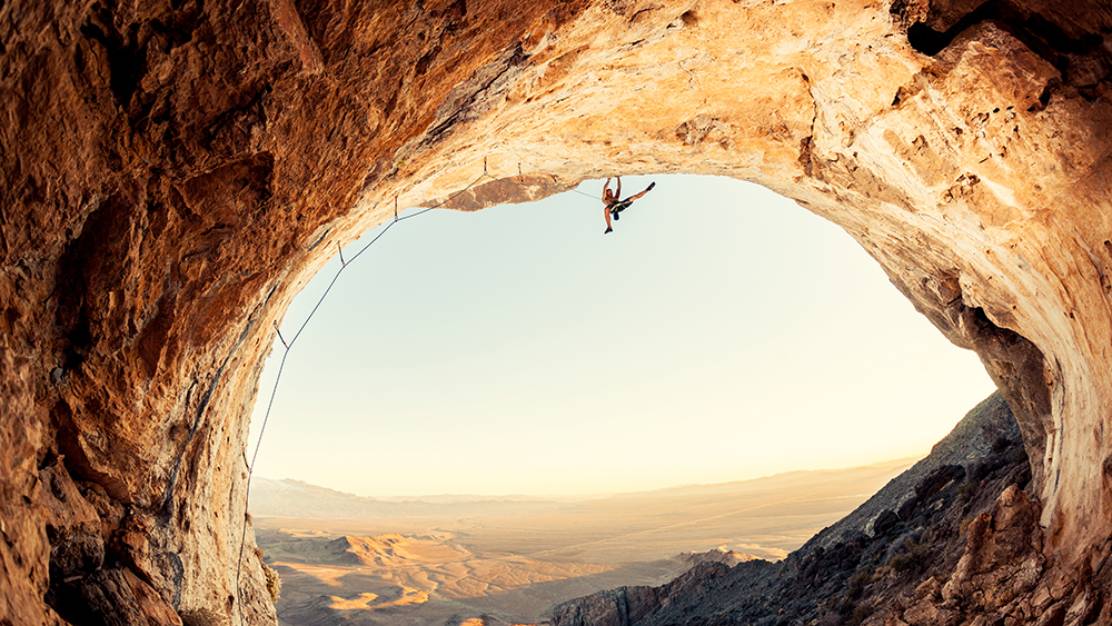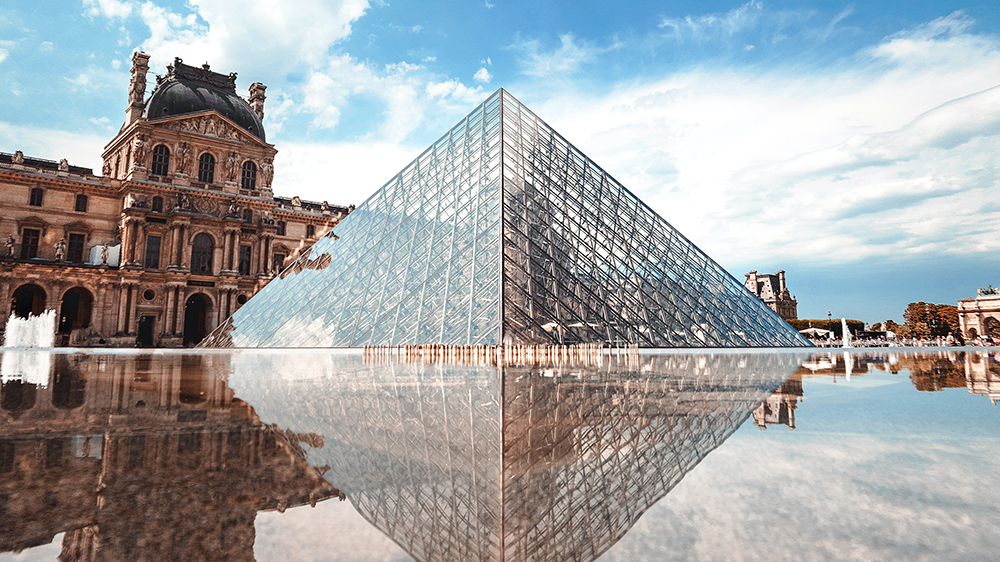Karen Knorr’s photography is splendid, fascinating and visually beautiful. But what does it mean, what is it saying, and what should the viewer take away from the experience? Andrew Leci cuts through the aesthetic with a butter knife, and is left a little confused
There is no doubt that world-famous photographer Karen Knorr’s new exhibition, Migrations, at the Sundaram Tagore Gallery is a triumph. The problem is, I’m just not sure of what, exactly.
The photographs are stunning, and occasionally captivating. But upon first viewing I’m not entirely sure how they make me feel. Technically perfect – a single photograph can take months to conceive and execute, being a masterful combination of the raw, natural talent of the artist and the wizardry facilitated by technology – the viewer is convinced that there’s method in the apparent aesthetic madness, but could be forgiven for asking, “what’s it all about?”

While I would love to ask Salvador Dali, for example, what he was thinking when putting together some of his more infamous pieces, I can’t because he’s dead, and I don’t know a decent ‘small’ or ‘extra-large’, never mind about a medium.
But I can ask Karen Knorr what she’s trying to achieve with some of her latest work, despite the fact that this is not always the function of art, and nor does it have to be. Pieces can be aesthetically pleasing, just because they are. But Knorr’s oeuvre has always incited debate and interpretation, since her first works between 1979 and 1981, entitled Belgravia, in which she lacerated the British class system, of which, in many ways, she was a product.
It was almost a case of ‘biting the hand that feeds you’, which is always good fun. Clearly the woman has substance. Or is she merely a privileged agent provocateur making mischief? When you have a lot of questions, and while speculation helps to while away a few hours, there’s nothing quite like looking for answers in the right places. The horse’s mouth is a great place to start, so I was delighted when Knorr – resplendent with her blonde mane – agreed to sit down for a coffee and get grilled like a cheese sandwich. Only on the basis, however, of being asked a question that she’s never been asked before. Shouldn’t be a problem, but let’s start with something vague and simple.

In conversation with Karen Knorr
Robb Report: Are you an artist or a photographer?
Karen Knorr: I’m both, and these days the distinction is blurred. In the sense that artists use photography and photographers are artists. My background is one of fine art, photography and film. I guess it used to be called ‘multimedia’. Personally, I don’t see any distinction because I think that art should be about the everyday, but it can also be about the extraordinary. Photography is the most accessible form of communication, I think, and that’s the art form I work in, predominantly.
RR: Your latest exhibition features animals in strange places, in locations where they shouldn’t be or where we wouldn’t normally expect. What’s the point?
KK: It’s what I call ‘disruption’, or ‘intervention’ in the old-fashioned academic language one used to use, but I think disruption is quite a good word.
It’s very popular in political circles, but it’s a strategy that artists have been using, at least in surrealism, to challenge and disrupt the reality that we’re observing in front of us. In some ways, my work comes out of the dialogue with surrealism, and the South American literature of Gabriel Garcia Marquez, who is associated with ‘magical realism’.

RR: Indeed, Marquez is known as the father of ‘magical realism’ – fantastical elements woven into a realistic presentation of the world, the apparent antagonism being accepted and becoming part of the overall landscape.
KK: That’s something that I read, and studied when I was growing up in Puerto Rico. With my work, I put the image together after I’ve collected the interiors, looking for the right quality in the interior itself.
The animals, disrupt, pollute and challenge the viewer. Why are they there, what are they doing there? They also personify characters, sometimes, out of the ‘origin stories’, and sometimes, they’re just real disruptors.
RR: (Much of the exhibition in Singapore features photographs taken in India, after a “2,000-mile road trip recce” that Knorr embarked upon with a girlfriend and, presumably, a very accommodating driver. She has a fascination with the Indian texts, Ramayana and Mahabharata, and sees depictions thereof in the palaces and temples she is allowed to visit and photograph. That’s the backdrop for much of her latest work, and then there are the animals…)
KK: Those places are the cultural heritage of high caste India. The idea that we have of India is always one of poverty, and stress – almost an exotic stereotype – people living in slums, and all of that.
That’s often the National Geographic idea that I grew up with. There’s no doubt that there’s inequality in India, but I wanted to focus on the high caste culture, because I hadn’t seen it really done properly. It’s usually done in a rather hagiographical way, in which the maharajahs are celebrities, and their castles are like the photo spreads in Hello magazine. I really didn’t want to do that.
There is this pressing concern about the degradation of landscapes, even of cultural heritage, because of mass tourism… along with the disappearance of endangered species, despite measures put down to protect them.

RR: (It’s time to get controversial.) Aren’t you pandering to these superstitions then? Don’t the ‘scriptures’ promulgate the caste system and the hierarchical structure that still exist in India today?
KK: One could say that about the Bible.
RR: True. And…?
KK: It’s the opium of the masses, as Marx used to say. I’m not a believer, but I have an interest in the stories that people tell themselves, in order to feel better about the way they live. These are the stories.
RR: (And then we segue into Modi and Hindu nationalism, which is a direction that neither of us wants to head.)
When I look at the animals in your photographs, they all seem to be perfect. Displaced, but not uncomfortable. I kind of want there to be a mottled, mangled moggy or a dishevelled cur surrounded by the opulence. Wouldn’t that have created a different, more interesting tension?
KK: Not the elephant. If you look, it has chains. He’s a temple elephant, and they’re probably the most abused. But I see what you’re getting at. It’s a too perfect, idealised world that I’m depicting, perhaps not disruptive enough.
I’ve always been criticised for using aesthetics and beauty in order to critique… from my very early work. And I’ve always found that for me it is a way of persuading people (a bit like how advertisements get beautiful images of people to do things) to maybe spend a bit of time with the work, and maybe think it through at that moment. I’m not saying that it’s political with a big ‘P’, maybe with a little ‘p’, to encourage the spectator to maybe do a little research and think about what they’re looking at.

RR: (As far as that is concerned, it’s mission accomplished, like quite a few things in Knorr’s career. When I ask her what she “wants to be when she grows up?” She says, “a wildlife photographer”, and she’s already all that, and more. It’s time for the never-before-asked question.)
Do you think that reality is simply a crutch for those people who can’t handle drugs?
(There is much laughter, and no answer. Knorr’s next project is another road trip, this time in the USA.)
KK: I’ve recently undertaken a collaborative project with Anna Fox, another woman photographer, to retrace Berenice Abbott’s Route 1 project that she did in 1954, the year of my birth. It’s to highlight her achievement, but also to find out what’s going on in Trump’s America today.
Growing up in Puerto Rico I developed a mild distaste for American imperialism – I have an American passport and I also have a British passport – so this will be interesting. I’m working with my iPhone more than with my SLR, which is a new way of working and I’m quite excited about it. It’s a challenge. Each time I make a work it has to be a challenge, and I have to find new ways of working. And every challenge met means that I grow up a little bit more.
See the exhibition
I’d be prepared to queue for tickets to Knorr’s next exhibition. Who wouldn’t want to see an intelligent, brilliant, mildly politicised artist commenting almost tangentially on Trump’s America?
In the meantime, however, trips to Gillman Barracks until 16 November 2019 will have to suffice for a fix of superb, aesthetically provocative photography and an examination of issues and agendas that challenge the spectator and stimulate debate.






